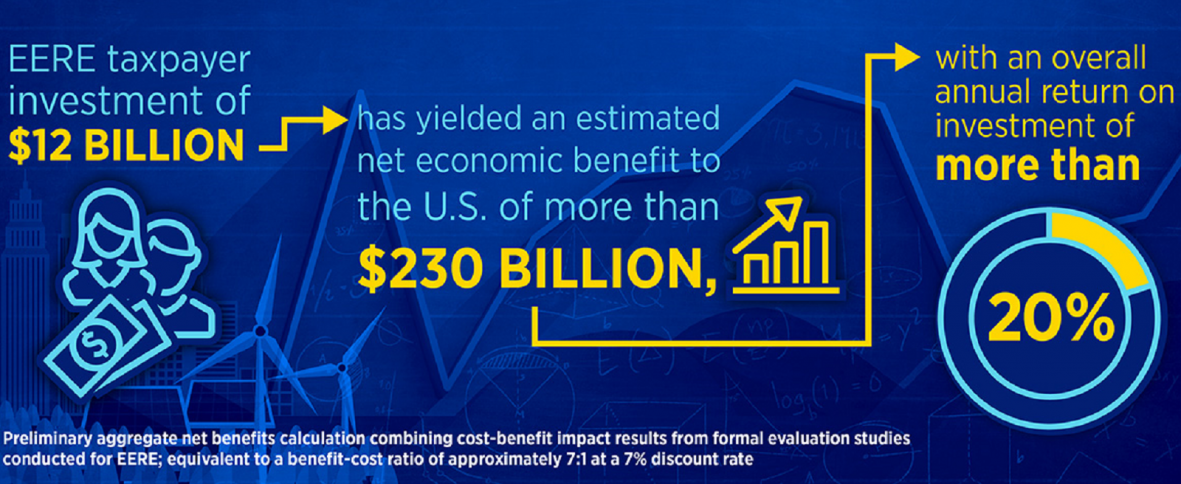U.S. Department of Energy's Office of Energy Efficiency and Renewable Energy
About
Learn about the U.S. Department of Energy's Office of Energy Efficiency and Renewable Energy (EERE) mission, vision, accomplishments, and strategic goals as defined in the 2016–2020 Strategic Plan.
Find out about EERE's history in the EERE timeline.
The mission of EERE is to create and sustain American leadership in the transition to a global clean energy economy. Its vision is a strong and prosperous America powered by clean, affordable, and secure energy.

To date, third-party evaluations have assessed one-third of EERE's research and development portfolio and found that an EERE taxpayer investment of $12 billion has already yielded an estimated net economic benefit to the United States of more than $230 billion, with an overall annual return on investment of more than 20%.
STRATEGIC GOALS
EERE aims to achieve the following strategic goals:
- Accelerate the development and adoption of sustainable transportation technologies.
Through improvements in engine efficiency, vehicle weight reduction, battery performance, drop-in biofuels, fuel cell performance, and reduced biofuel and hydrogen production costs, EERE can meet this goal. This includes supporting advanced vehicles and alternative fuels. Increase the generation of electric power from renewable sources.
Through reducing the cost of hydropower and solar, wind, wave and tidal, and geothermal power, EERE can increase renewable generation.Improve the energy efficiency of our homes, buildings, and industries.
EERE has set milestones for providing energy savings of 25%–50% by 2020–2030. By developing new materials, technologies and processes for American homes, buildings, and industry, EERE will implement minimum energy performance standards, improve building energy codes, and support home weatherization.Stimulate the growth of a thriving domestic clean energy manufacturing industry.
Through reducing the life-cycle energy consumption of EERE-targeted manufactured goods by 50% by 2025, EERE will encourage the manufacture of clean energy technologies in the United States.Enable the integration of clean energy into a reliable, resilient, and efficient electricity grid.
Through new grid-support technologies, as well as standards, test procedures, sensors, communication protocols, cyber security, and resilience these technologies need, EERE can meet clean energy goals.Lead efforts to improve federal sustainability and implementation of clean energy solutions.
Through EERE technical support to all federal agencies and federal agency access to third-party financing, EERE can help federal agencies to be early leaders in deploying clean energy.Enable a high-performing, results-driven culture through effective management approaches and processes.
Through enhancing and maintaining EERE's workforce and establishing clear plans to deliver on EERE's mission, the organization will see a high-performing culture.
Information
Taxonomy
- Renewable Energy
- Renewable Energy